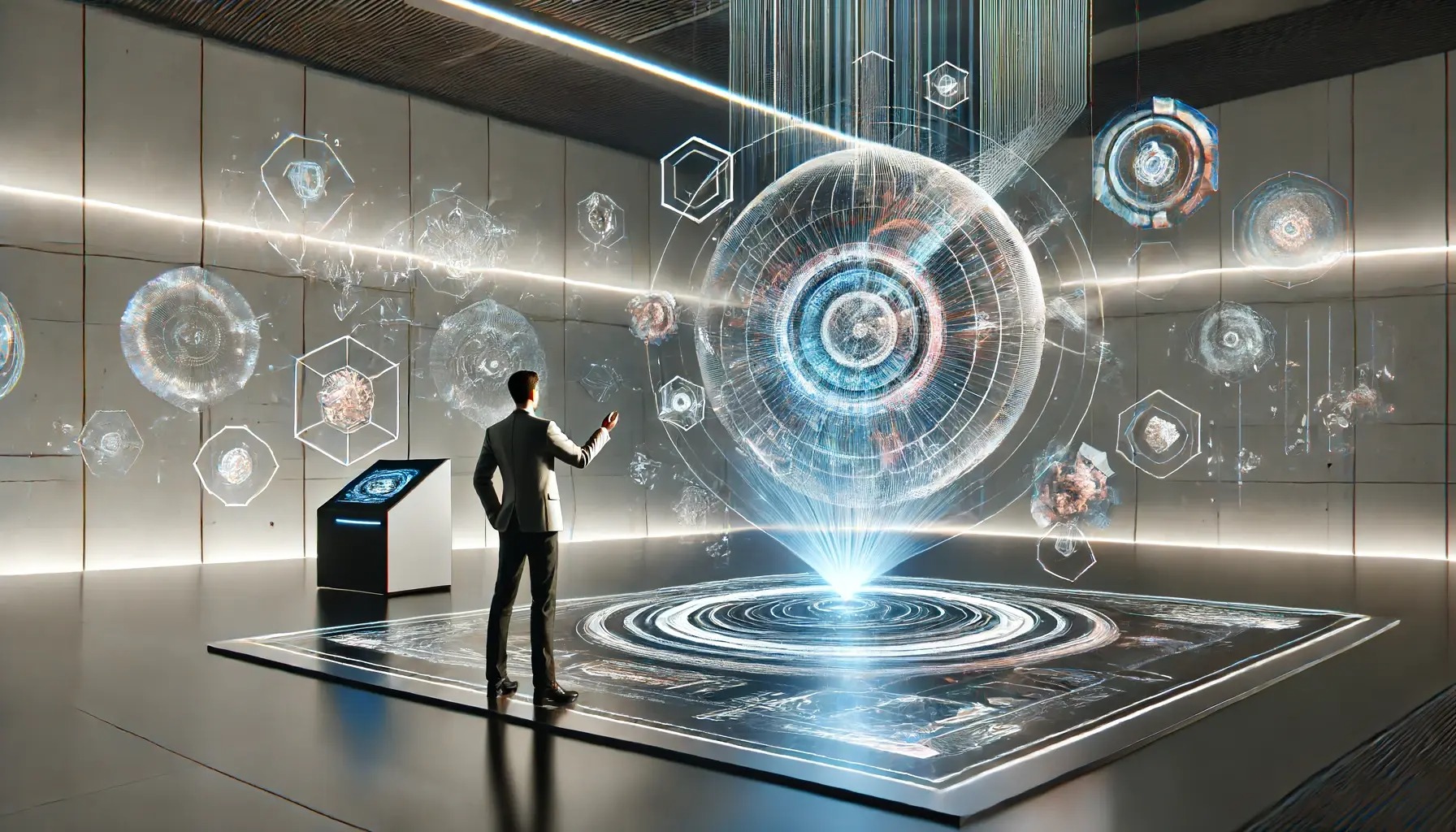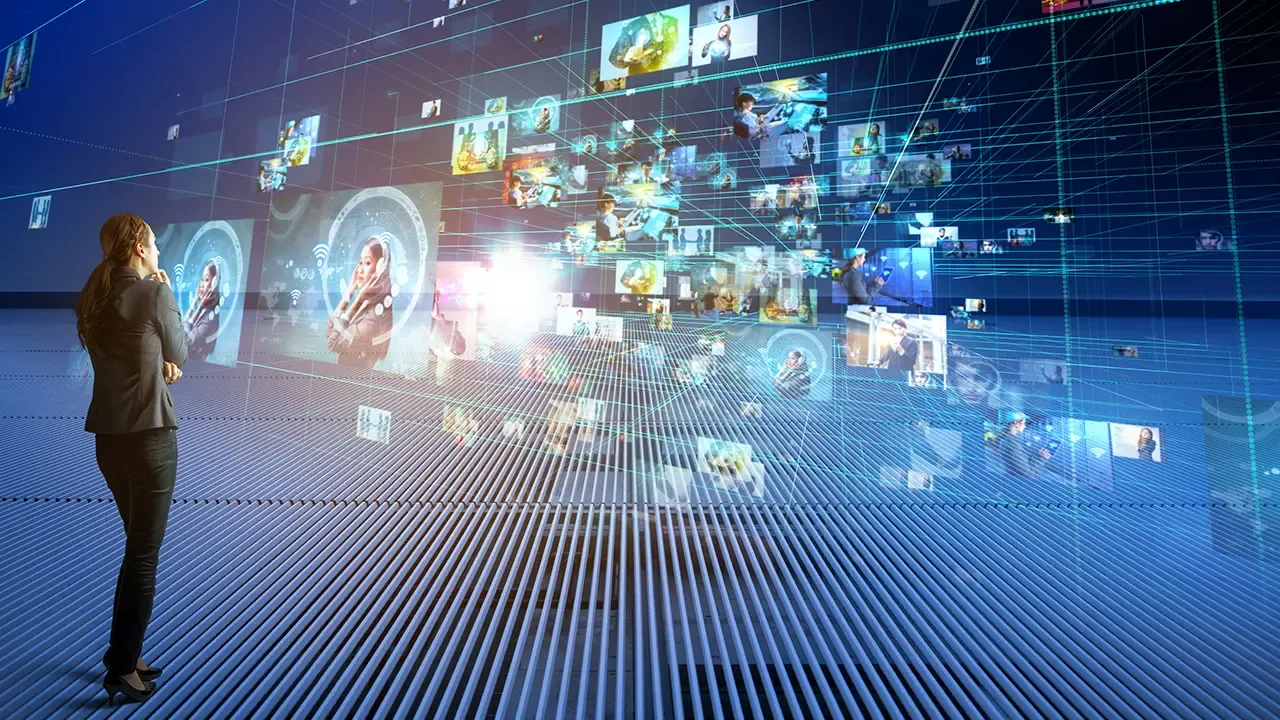Progress in display technology has been moving at an impressive pace, and what once seemed like science fiction is now gradually taking form in day-to-day applications.
Holographic displays, which allow viewers to see 3D visuals without special glasses, are now becoming more than a demonstration of futuristic concepts.
These visuals go beyond traditional screen projections, allowing interaction with digital objects in ways that feel much closer to physical engagement. Technological improvements in image projection, computing power, and optical engineering are bringing holography closer to widespread use.

3D visuals are stepping out of science fiction and into real life (Photo: Twitter)
Although these systems have been under development for many years, 2025 appears to be a turning point where practical versions begin to find footing across industries.
With efforts coming from different corners of the tech world, including startups and multinational firms, the potential of holographic displays is being tested across areas like communication, education, health, and design.
What Makes Holographic Displays Different
Unlike regular screens that show flat visuals, holographic technology creates the illusion of volume and depth, offering the eye a real sense of space. Instead of looking at a 3D image rendered on a 2D plane, the user observes a floating image that adjusts based on viewing angle. This is possible through complex arrangements involving light diffraction and interference, supported by accurate computational models.
These displays use spatial light modulators, digital micro-mirror devices, or laser-based projection systems to create visuals that appear suspended in space.
The output is not restricted to a fixed frame like conventional monitors. That sense of freedom, combined with the feeling of dimensionality, is why engineers and designers are placing more focus on this form of display.
Uses Beyond Entertainment
Though holograms have been frequently associated with concerts or entertainment appearances, the scope is far wider. Remote conferencing could take on new life with holographic systems, letting professionals interact in a virtual 3D space rather than flat video calls. Medical professionals may be able to examine and manipulate anatomical data as 3D projections during diagnosis or surgery planning.
In classrooms, instructors can use holographic tools to demonstrate physical and scientific concepts more effectively. Students could study models of ancient architecture, planetary systems, or biological cells by moving around or through projections rather than reading flat diagrams. This increases engagement and retention, especially in visual learning settings.
The Driving Forces Behind the Change
Several technological areas are combining to support the advancement of holography. Graphics processing units, or GPUs, now deliver higher frame rates and handle larger amounts of data in real-time, which is critical when generating 3D visuals from different perspectives. Optical hardware has also improved, allowing better projection of light fields without distortions or blur.
Another boost has come from artificial intelligence, which helps predict and render image angles quickly, reducing the processing time needed for detailed 3D reconstruction. Machine learning models enhance depth estimation and improve object tracking, allowing the projected visuals to respond more accurately to user position and interaction.
Companies and Research Labs Pushing the Boundaries
Several institutions are behind the recent jump in progress. While some companies focus on building standalone displays for personal and enterprise use, others are developing glasses-free solutions for integration into everyday devices. These products are being tested for use in smart homes, car dashboards, and even handheld devices.
University-based research is also contributing through innovations in material science and optical control. Experimental holograms built with nanostructured materials, which can bend light with high accuracy, are achieving better resolution and wider viewing angles. Such progress means fewer limitations on user positioning and greater realism across viewing conditions.
Affordability and Manufacturing Challenges
Despite the promise, making holographic displays widely available will require solving some ongoing issues. The production costs for many systems remain high, due to complex component requirements and precision needed during assembly. Manufacturing at scale while preserving quality has yet to be fully mastered.
The energy consumption of real-time holographic visuals remains higher than traditional displays, which could slow down adoption in mobile or wearable applications. Battery life and heat control are among the concerns developers still need to resolve before these displays can be fitted comfortably into smaller devices.
Impact on Communication and Work Culture
Once made more accessible, holographic communication could change how people conduct meetings, provide training, or collaborate on design. Instead of exchanging flat files and static images, teams may walk through a building model together, inspect a 3D engine component, or review data structures projected as dynamic objects in a shared room.
Such changes will also affect how people prepare for professional work. A designer may need to learn how to present their work using motion and depth. A doctor may need to practice diagnosis through 3D interfaces. As these displays become more common, they will introduce new visual languages and communication habits.
Moving from Prototype to Practical Use
Although many of the available systems are still considered prototypes, the current pace of development suggests that reliable versions for public use may arrive sooner than expected.
Some public events and demonstrations have already shown the feasibility of large-scale holography in open spaces. As these technologies improve their durability and reduce setup time, more industries are likely to invest in them.
This period of transition also allows developers to gather feedback and adapt designs for broader compatibility. For example, adjusting brightness levels for outdoor settings or ensuring compatibility with existing operating systems and software. These steps will ensure the displays can blend into current digital ecosystems.
Safety and Ethical Questions
As with any visual media, holography comes with its own challenges. The question of visual fatigue has been raised, especially during long viewing sessions.

Holographic displays are changing how we see images and information (Photo: Shutterstock)
Developers are working on systems that balance clarity and brightness to avoid straining the eyes. On the ethical front, creating lifelike 3D images of people raises privacy questions, especially if used without consent in public displays or recordings.
Content authentication is another matter. The more realistic these visuals become, the harder it may be to distinguish between a live event and a digital projection. Safeguards need to be put in place to avoid misuse, particularly in areas such as political communication, advertising, or news media.
Education, Gaming and Retail Industries Are Ready
Virtual classrooms, interactive exhibits, and immersive lectures are just a few of the possibilities teachers can embrace. In gaming, developers are experimenting with titles that respond to body movement and physical gestures, while the game elements appear in the middle of a room. This type of experience has the potential to change how users think about digital storytelling and interaction.
Retail businesses, too, are showing interest in holographic solutions. Digital store assistants, rotating product views, or life-sized virtual try-ons can offer customers fresh ways to interact with merchandise. For instance, a car buyer could inspect a 3D model of a vehicle, checking interiors and features without stepping into a dealership.
What the Next Few Years Could Look Like
Holography is at a stage where research efforts and commercial interest are working together. With increasing investments in both hardware and software, the technology is set to influence many digital services and tools. If manufacturers manage to lower production costs and resolve power demands, the reach of this display method may extend far beyond early adopters.
Even as challenges remain, the direction is clear. Holographic displays are no longer just science fiction visuals. They are being tested, refined, and improved for daily use.
As more people interact with this type of technology in classrooms, offices, or even homes, fresh possibilities for visual communication will continue to develop. The question is no longer about if this technology will be used, but how soon it becomes part of everyday life.
























